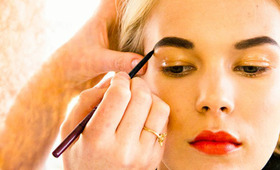
Most of us have inspected the drain after a shower (or the bathroom floor after a blowout) and thought, Wow, that’s a lot of hair. Everyone experiences hair shedding, after all. Research shows that the average person sheds somewhere between fifty and one hundred strands of hair (!) every day. So when is hair loss normal, and when does it signify an underlying health problem?
Rest assured that shedding is a natural part of your hair’s growth cycle. Every hair on your head goes through phases of growth and rest before eventually falling out. Hair loss becomes problematic if you notice a lot more falling out than usual, if your hair comes out in clumps, or if you experience thinning hair or patches of baldness on your scalp. Some causes of hair loss or thinning include:
-
Genetics. Female- and male-pattern baldness are hereditary conditions that run in your family (thanks, Mom and Dad).
-
Hormones. Hormonal changes or hormonal disorders (like polycystic ovary syndrome) can cause hair loss. Many folks notice hair loss after giving birth or during menopause.
-
Stress. Extreme physical or emotional stress can lead to temporary hair loss. This can be caused by traumatic events like divorce, death of a loved one, surgery, or even dramatic weight loss.
-
Nutritional deficiency. Hair loss can also occur if you’re not getting enough of a certain nutrient, like protein, iron, or vitamin B12.
-
Illness. Some illnesses like diabetes, lupus, hypothyroidism, and certain autoimmune disorders can make you lose more hair than normal.
-
Medication. Sometimes hair loss is a side effect of medication or a medical treatment such as chemotherapy.
-
Styling damage. Certain hairstyles that pull at the scalp like tight braids or updos can damage hair follicles and cause a type of hair loss called traction alopecia.

If you feel like you’re noticing more hair than usual in the shower, on your hairbrush, or on your pillow, don’t freak out. According to Harvard Medical School, about one in three women experience hair loss at some point in their lives. Temporary excessive shedding (or telogen effluvium) is brought on by an underlying trigger such as an illness or imbalance. It’s also worth noting that due to your hair’s growth cycle, shedding peaks about four months after the incident that caused it, so work with your doctor to identify and treat the root cause.
While you wait for your appointment with your doctor, here are a few tips for dealing with less-than-voluminous locks.
-
Eat more protein. Getting enough protein in your diet is essential for hair growth.
-
Take your vitamins. A diet rich in iron, vitamin C, vitamin B12, vitamin D3, copper, zinc, and selenium can set you (and your hair) up for success.
-
Reduce styling damage. Avoid tight hairstyles, using hot tools too often, bleaching your hair, and getting frequent chemical perms or hair- relaxing treatments. If your hair has been overprocessed, invest in a good conditioning mask.
-
Sleep with a silk pillowcase. Silk is smoother than cotton, so it’s less likely to snag and pull at your hair while you sleep.
-
Keep your scalp happy. An itchy, flaky, inflamed scalp can lead to more shedding than usual. Try a scalp treatment to keep dandruff and inflammation at bay.
Illustrations by Megan Badilla














